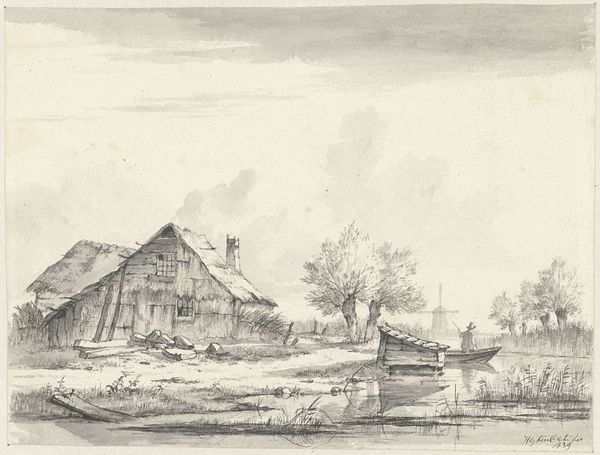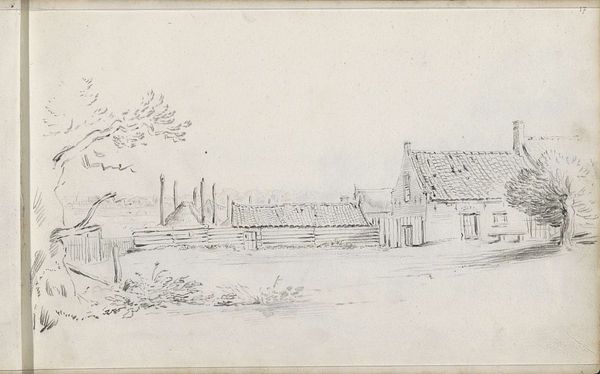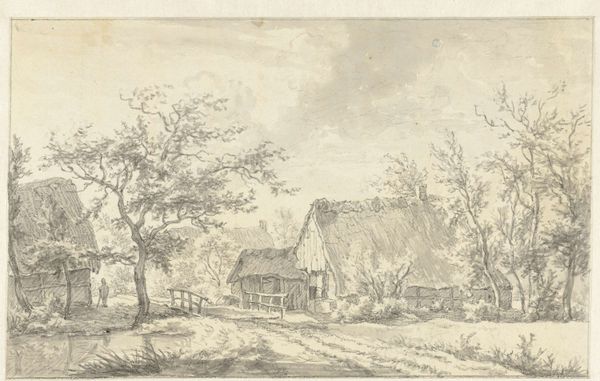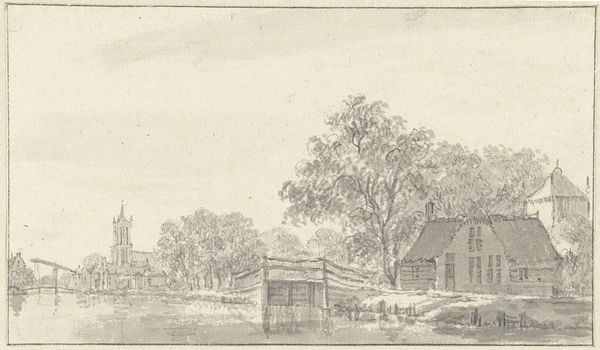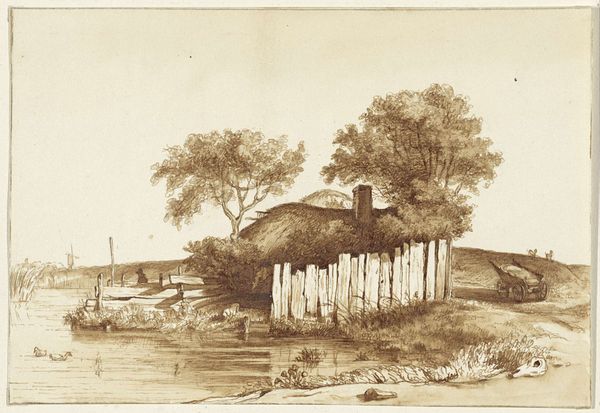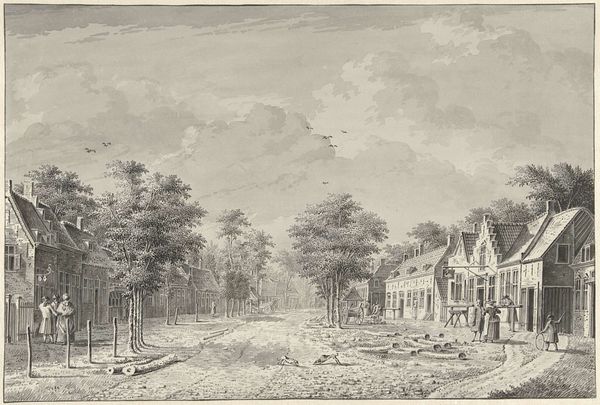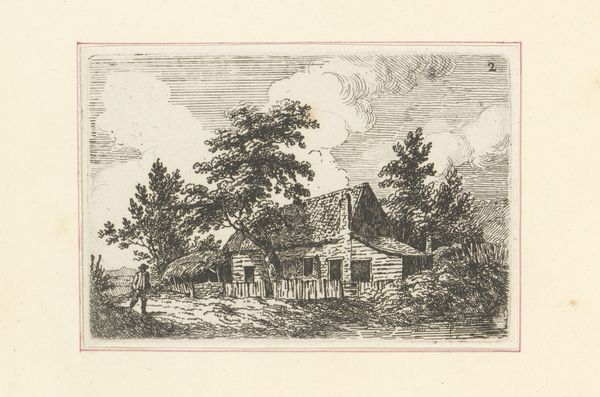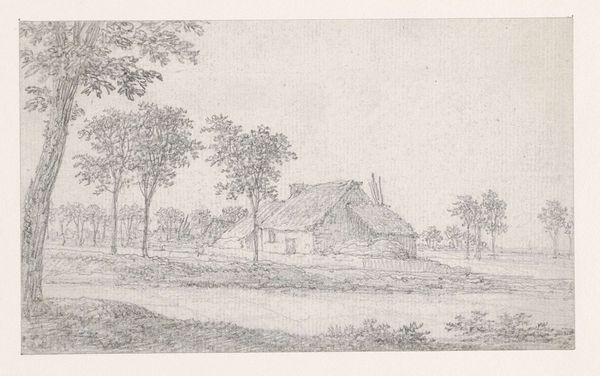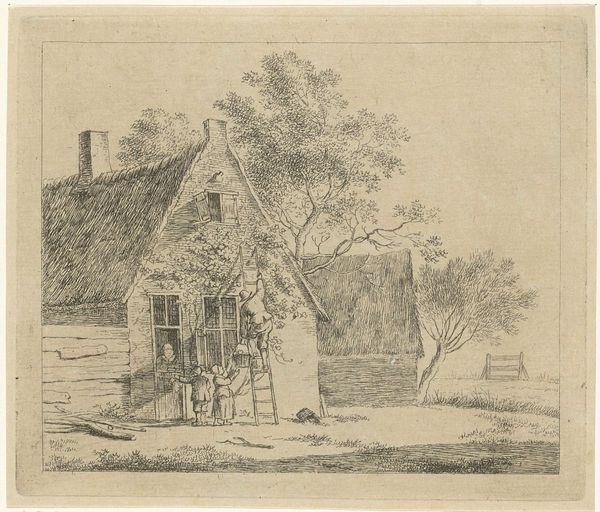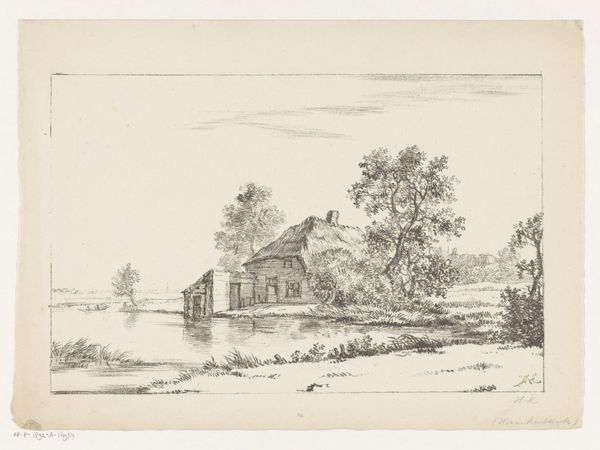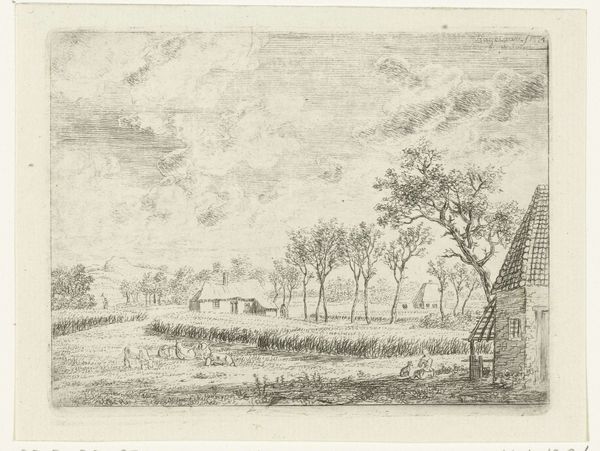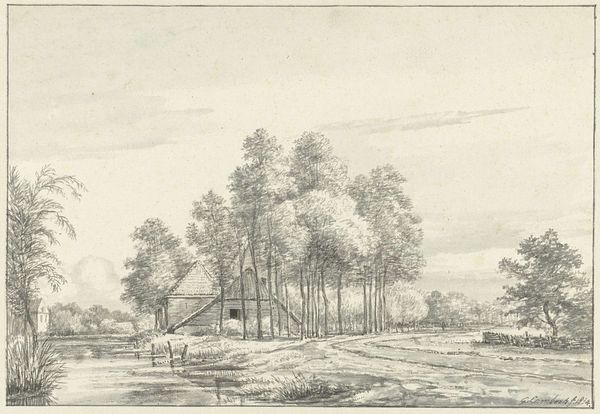
drawing, paper, watercolor, ink
#
drawing
#
dutch-golden-age
#
landscape
#
paper
#
watercolor
#
ink
#
watercolour illustration
#
watercolor
Dimensions: height 217 mm, width 384 mm
Copyright: Rijks Museum: Open Domain
Editor: Here we have Lambert Doomer’s “Garden of the Hermitage in Nantes,” made around 1645 to 1646, rendered with ink and watercolor on paper. It feels muted and rather serene to me. The details are delicate but also melancholic. What do you see in this piece? Curator: Oh, absolutely! It whispers rather than shouts, doesn't it? I see Doomer, a bit of a wanderer, capturing not just a place, but a feeling. Imagine him, sketchbook in hand, feeling that northern light on his face, trying to bottle that specific mood. Notice how he uses the watercolor—it’s almost like a veil, blurring the edges of reality. And those figures clustered in the garden, almost like whispers of a story untold. What do you make of their placement? Editor: They seem very separate from the rest of the activity of the garden. Is he perhaps trying to make some point about religious seclusion or contemplation in nature? Curator: Precisely! Dutch Golden Age landscapes weren't just pretty pictures; they were often infused with symbolism. That hermitage wouldn’t just have been a building; it would have resonated with ideas of reflection, escape, even spiritual searching. It feels like Doomer is almost staging a play, asking us to consider our own place within this peaceful scene. Is there anything that stands out to you in the details? Editor: I'm drawn to how he contrasts the untamed foliage with the geometrical patterns of the garden beds. The human desire to shape and control versus the inherent wildness of nature? Curator: That’s insightful! It's a delicate balance, that push and pull. It is as if the scene itself breathes. It’s almost meditative in a way. I’ve learned something new by looking at it through your eyes. Editor: Yes, that feeling definitely resonated. I feel like I’ve understood a bit more about the subtleties of Dutch landscape painting, especially how they’re less about recording a scene and more about communicating feeling and concepts.
Comments
No comments
Be the first to comment and join the conversation on the ultimate creative platform.
